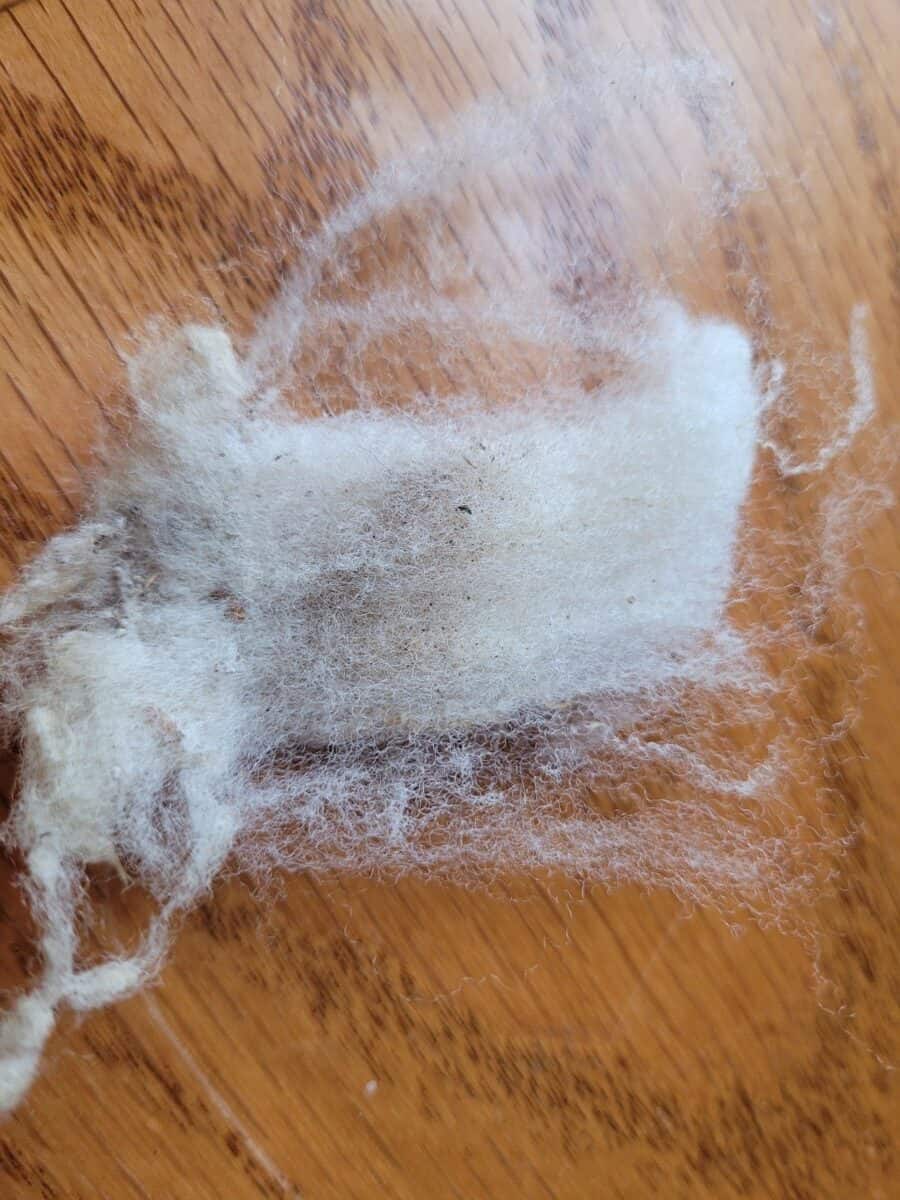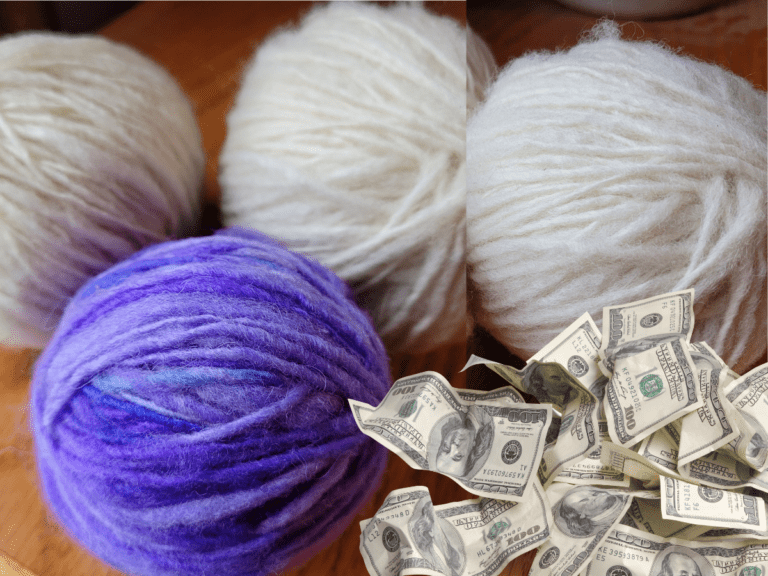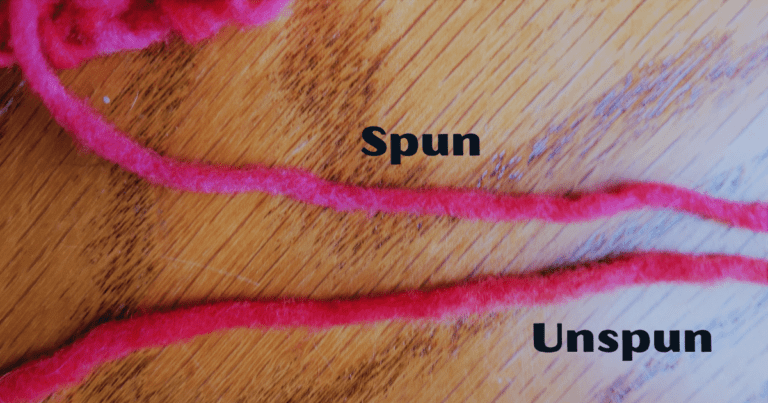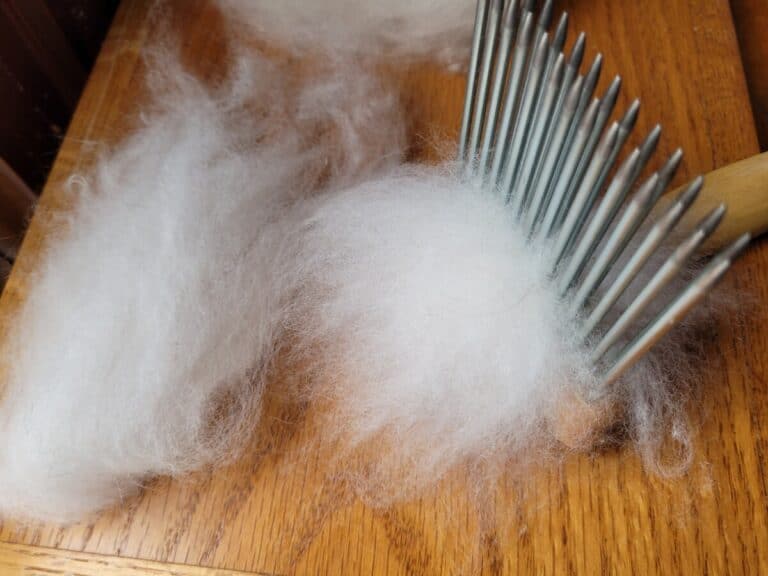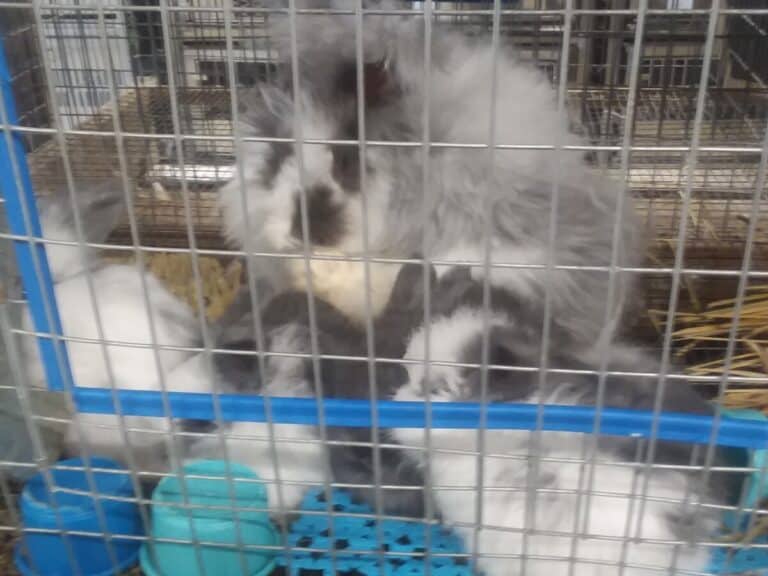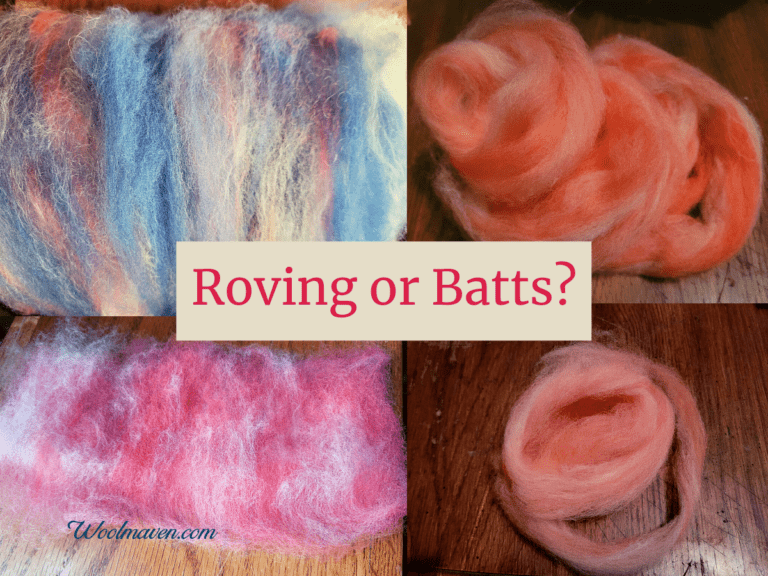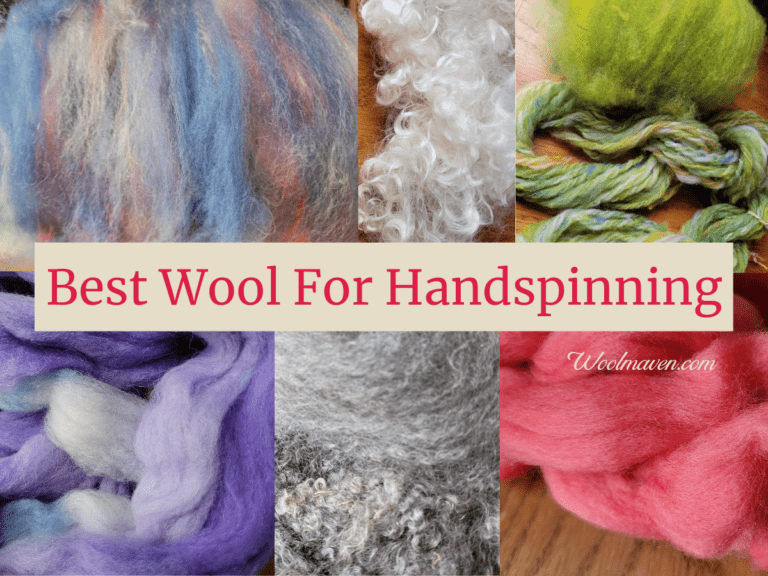5 Tips To Match A Fleece And Your Handspinning Project
All wool can be used for some sort of spinning project and, actually, most wool has something it’s known for being spectacular in!
The trick to having a wonderful fleece to work with is to match what you want to do with the fleece with the built in characteristics of the fleece that will be ideal for your needs and wants.
To get an ideal fleece for your handspinning project, you need to match your end goals with the natural characteristics of the fleece, both on a breed and individual fleece level, and with the physical condition of the fleece, like individual fiber integrity or contaminants.
Is Spinning Your Own Yarn Worth It? goes over the math of spinning versus buying wool yarns.
What is your end goal for this fleece?
To know where to start with your search for a fleece that is a joy to work with, you’ll need to consider where you want to end up with your final project.
I’ll have to admit, I look around at fleeces online and always love the looks of quite a few!
So, how to choose? What are the things I need to be thinking of to help me get a great fleece to work with?
Here are some ideas:
- Are you looking to work with a new to you breed specific wool?
- Do you want to make a yarn in a specific style or technique?
- Are you trying out some new equipment?
- Do you have a specific idea for a finished project?
- Are you looking to jump into working with fleeces rather than buying prepared wool?
- Are you looking to broaden your abilities by going finer or longer than your normal?
- Do you just want a fleece that is easy to work with?
List the characteristics you need or want
Now, list out the main characteristics that will need to be in the fleece you buy.
If you don’t have this part figured out yet, take a few minutes and really think about what are the main two or three things that you want in the fleece you use.
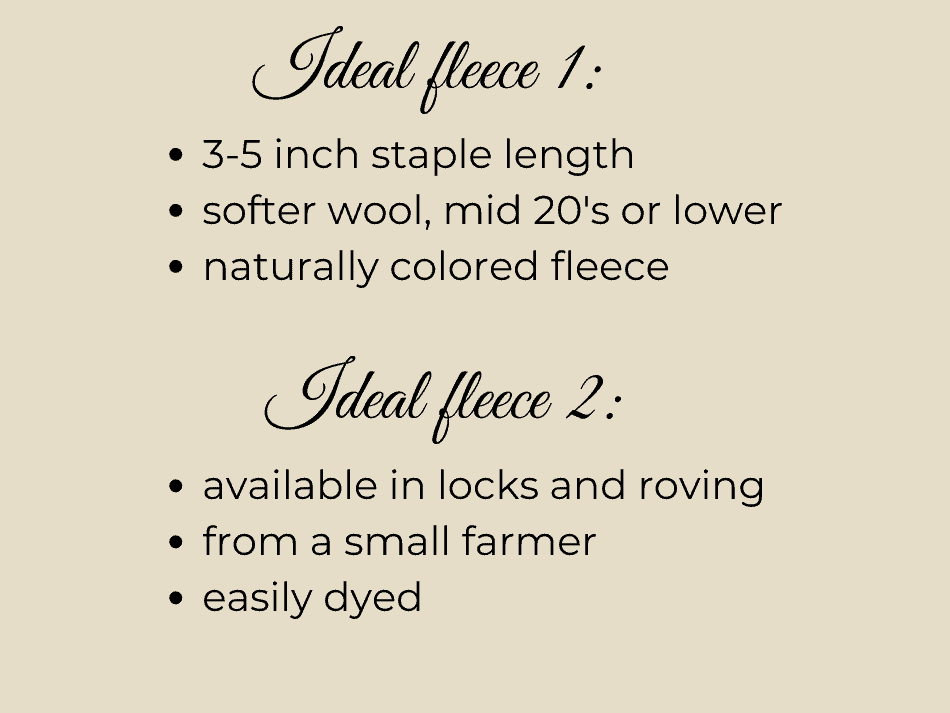
An excitedly purchased fleece that starts with “Wow, that fleece looks great!” can quickly turn into “What on earth am I going to do with all of this fleece?” when you realize you picked on looks not functionality.
For me, thinking through my reasons for purchasing are tough when I see a wonderful naturally colored fleece. It’s like they call to me!
Notice the part I didn’t talk about, like the fleece would be perfect for my next project or spinning goal, no, this is just about looks!
If part of the fun of working with wool is the discovery aspect of each new to you fleece, then don’t worry about it, you’ll find all kinds of neat things to do with the wool you get.
If, on the other hand, you will be disappointed to find that the fleece didn’t work for the things you want to do, you need to go a bit more carefully here.
Here is a chart I put together on my first site, 100+ Breeds Of Sheep For Wool giving you the wool characteristics and uses.
What additional steps are you taking with the fleece?
Not only do you need think about what you are planning to do with your spinning, you also need to consider any extra steps you are taking to get to your finished project.
For instance, are you planning on dyeing the wool a vibrant color? Some wool takes dye very well, some does not. If color is integral to you project, make sure you choose a wool that is known for taking dye well.
Do you plan to felt the finished project? Believe it or not, not all wool will felt!
This sounds crazy for anyone who has had problems with accidental felting, before, but it’s true, especially for the down breeds, for example Dorset or Southdown.
The great news it that the opposite is true, as well, meaning that the down breeds are basically a natural super wash wool!
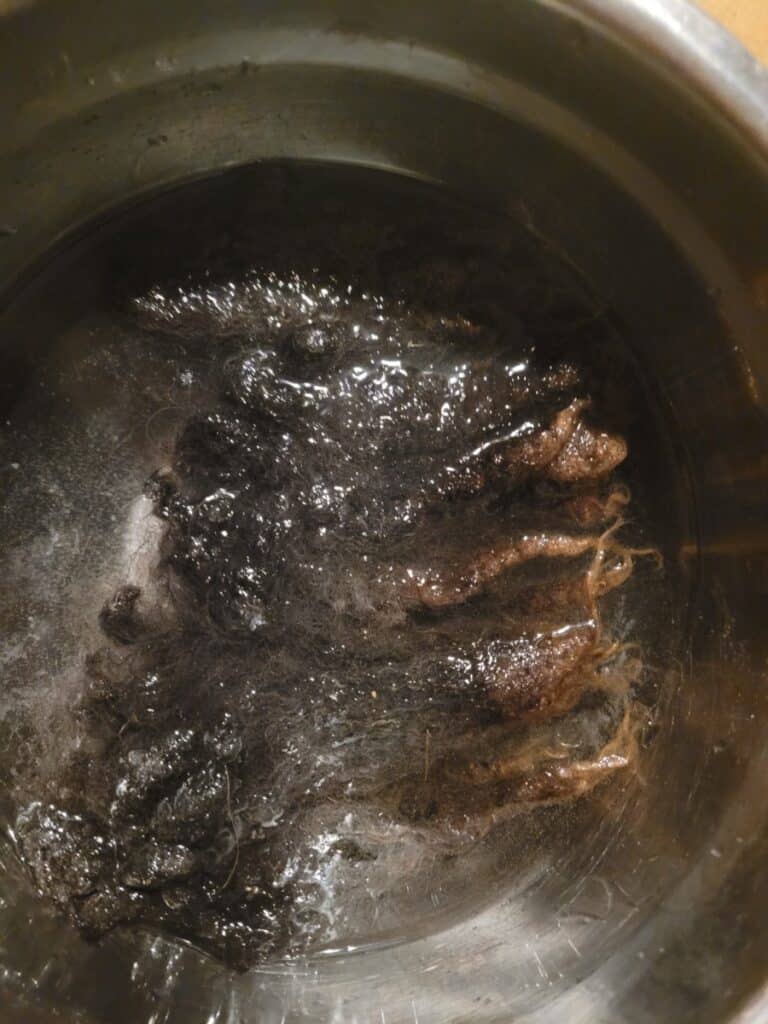
Are you planning to wash the fleece or use it raw?
Generally speaking, the finer wool fleeces will also have a good amount of grease that needs washed out to make them more easily spun.
If you don’t plan to wash the fleece, you’ll want a fleece that has little if any VM (vegetable matter) and has easy to tease open locks.
If the fleece is dirty or has locks that need combed or carded, you may want to wash, or at least suint soak the fleece first, before carding or combing.
How To Get Wool Ready For Spinning In The Grease shows you how to figure out if the fleece you have is a good candidate for spinning raw.
Another question to consider is how much variation are you willing to work with in your spinning?
All fleeces have some variability, with different areas of the body having different micron count wool. Generally, the more primitive the breed, the less consistency you’ll get with the fleeces.
If you want super consistent wool to work with, be super selective on which breeder you buy a fleece from or make sure to prepare all the wool you’ll need for the project together, so you get a blend that is a constant.
Multiple breeds are likely to work
It’s great to know that multiple breeds are likely to be just about perfect for your project!
This gives you a good number of breeds to select fleeces from, making it much more likely that you’ll end up with a fleece you’ll love!
Since you have your list of must haves for the fleece, start comparing your list with the characteristics of some breeds and see what you come up with.
You should be able to narrow down your search pretty fast, to at least a couple of specific breeds that will suit your needs.
Now, you need to start getting a bit more selective.
Double check to make sure the final candidates on your list are have all of the characteristics you want, then start specifically searching around for a fleece.
If you are shopping online, consider emailing the shop owner and asking specific questions about the fleece for sale.
The shop owner wants you to be happy with your purchase, send off a quick email with the questions that will help you finalize your purchase.
I do need to mention that some unusual breeds or unusual colors sell out very early, sometimes months ahead of shearing!
If you find something you like and it is not available, know that sheep need to be shorn yearly, and in the case of the longwool breeds, twice a year.
Get onto the shop or farm contact list, for now, and be ready to buy the fleece you picked out when it comes up for sale again.
I know that’s a bit disappointing, but the really great stuff sells out quickly for a reason, it’s great, which is worth waiting for!
This waiting period will give you some time to plan more and brush up on your skills so that you are good to go when your ideal fleece does become available.
Be sure to get on the list!
The reason I say this is because the more demand there is for fleeces from a specific breed, the more folks will consider raising sheep for wool.
We raise sheep for a living, just commercial ewes, and get near nothing for the wool, shearing is a money loss, our pay is all based on market lambs.
If you want more folks to take the time and go to the work of keeping a specialty wool sheep (which is a lot of work to keep that wool clean!), then you need to put the word out about your interest.
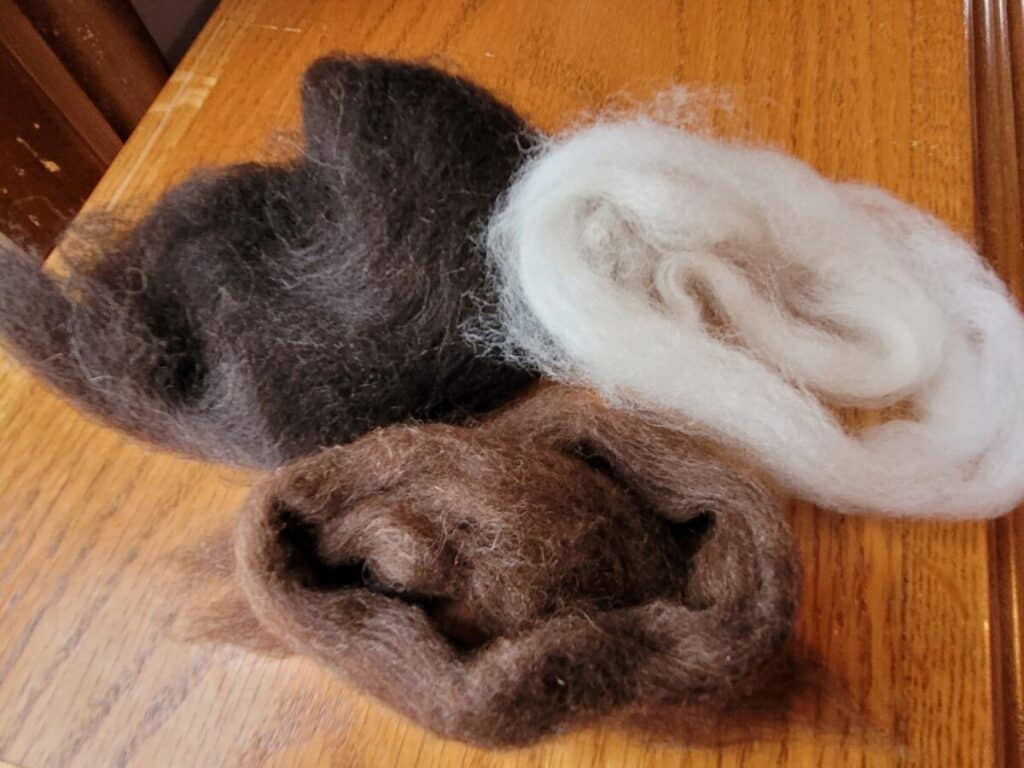
If you are new to this wool, get roving first!
The final tip I have for you is to get some commercially prepared roving, or more likely, combed top, of the breed specific wool you are looking for if you are new to this wool.
Why? Mostly because that breed’s wool may not turn out to be what you are expecting it to be!
I have been ordering quite a few new to me wools to increase my hands on knowledge of more breed specific wools.
I usually use wool from our own sheep for my projects, but this year I decided to branch out!
Here are a few recent examples from my wool experiments:
- Gotland was harder for me to figure out at first than I would have guessed. It was also a much softer yarn when knitted that I thought it would be, interesting.
- The Romney I got was so easy to spin, that I expected, what I didn’t expect was how neutral I am regarding the yarn. It’s fine, but I thought I would love it and end up ordering a fleece or two. Maybe for a specific project later, but for now I’m going to keep looking around. This is not a knock on Romney, I liked spinning with it, it just did not wow me like I figured it would.
- The Merino I ordered spins like a dream, which is not what I expected, at all. I have tried merino in the past and it was a disaster for me, I made this scary little twine that looked and felt like wire! Obviously, the problem was me, not the merino, but it kept me away from trying more merino, until now. Now, I really enjoy working with it and will definitely get more!
The reason I’m telling you this is that if I had gotten an entire fleece of one of the wools that I didn’t really care for I would have been disappointed, mostly because this is fun for me so why work through an entire fleece of something I don’t like?
When we shear here, I always keep out a few fleeces to play with for the year, but I plan on some of them not being what I had hoped for, this is why I keep out 4 rather than one or two.
But, since these fleeces are here and at no extra cost or work to me, it really doesn’t matter if a few of my choices bomb out. If, however, I had purchased these, I would not be a happy spinner!
To get the most out of your choices, work with this type of wool first, at least an ounce or two, and see if you like the fiber before you buy an entire fleece.

